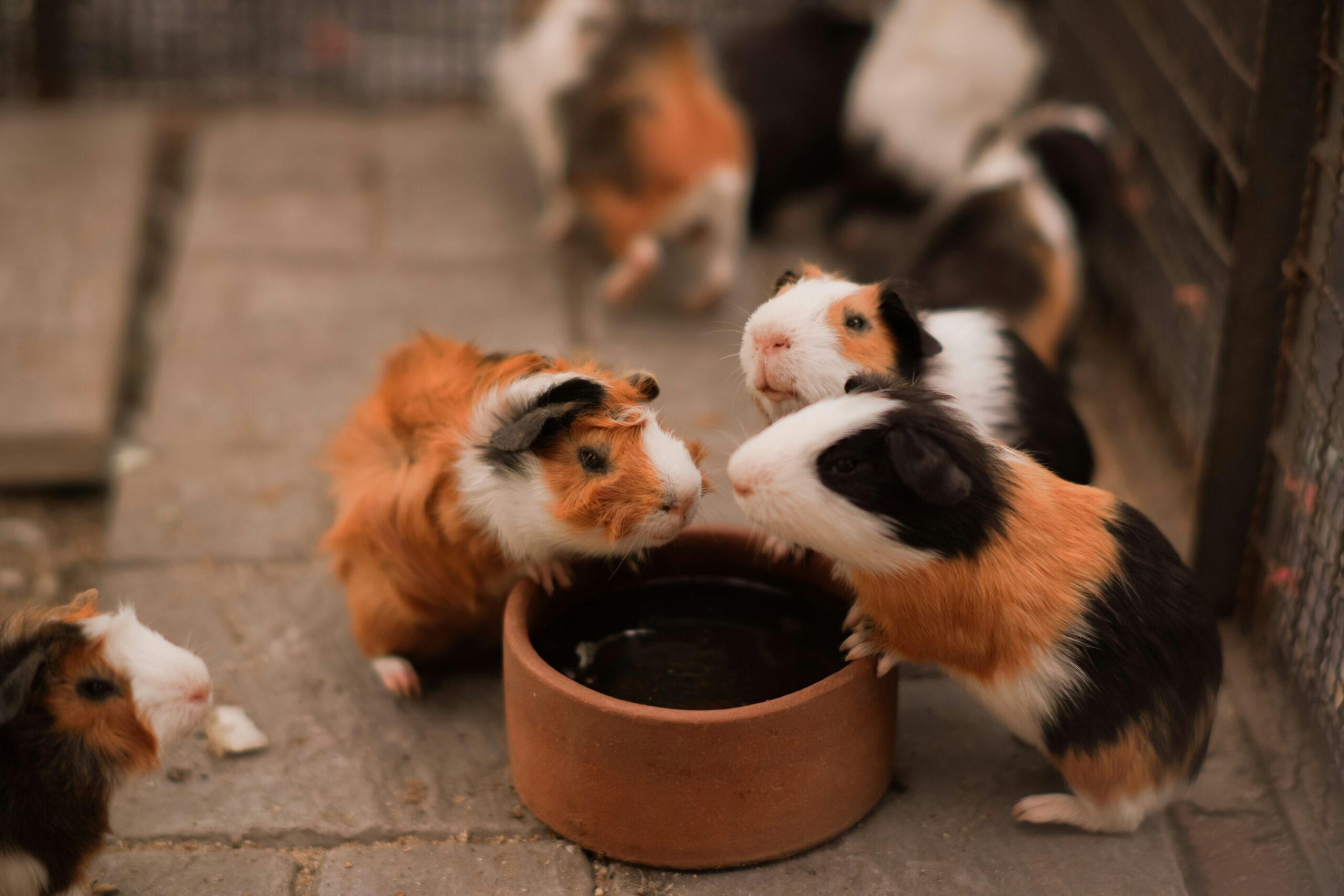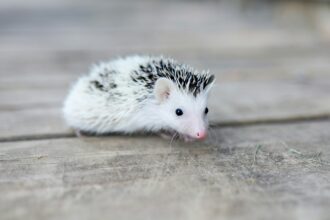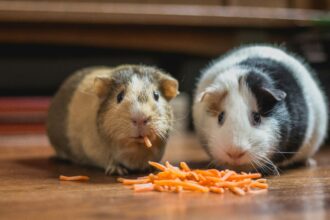Whether you’re caring for a squeaky guinea pig, a curious hamster, a gentle rabbit, or a speedy little gerbil—knowing how to feed a small animal properly makes all the difference in their health and happiness. Each species has its own quirks and nutritional needs. What works for a rabbit might upset a hamster’s tummy. And what counts as a treat for a guinea pig could be a no-go for a gerbil.
This ultimate guide walks you through feeding small animals the right way—from daily essentials to special snacks—so you can build the perfect small pet diet plan.
Understanding Small Pet Dietary Needs
Feeding small animals isn’t a one-size-fits-all situation. Each type of pet comes with unique digestive systems, vitamin requirements, and food sensitivities. But they all share one thing in common: they thrive on consistency and balance.
What’s included in a healthy small animal feeding guide?
- A steady supply of species-appropriate hay or dry mix
- Limited fresh vegetables and fruits
- Clean water at all times
- Safe chew items for dental health
- Occasional treats with real nutritional value
Before we dive into individual animals let’s look at why this matters. Many small pets are prone to obesity or vitamin deficiencies when fed incorrectly. Others develop digestive issues or dental problems from the wrong textures or food types.
Guinea Pig Diet Basics
Guinea pigs have sensitive digestive systems and a critical need for Vitamin C. Because they can’t make this vitamin on their own their diet must include:
- Unlimited hay (mostly timothy)
- Vitamin C-rich vegetables like bell peppers and parsley
- Guinea pig-specific pellets fortified with Vitamin C
- Occasional treats like healthy guinea pig snacks—think cucumber slices or carrot tops
Explore guinea pig food varieties to find options without seeds or fillers. For added enrichment rotate in guinea pig fruits and veggies like apple slices (seedless) and a few blueberries once or twice a week.
Looking for value? Stick to the best guinea pig pellets with minimal ingredients and no artificial colorants. And remember—fresh veggies are daily essentials not optional extras.
How to Feed a Hamster
Hamsters are omnivores so their diet is more diverse than guinea pigs or rabbits. That means they can enjoy both plant-based food and protein sources in moderation.
Essentials for a balanced hamster diet:
- A high-quality seed or pellet mix made for hamsters
- Small servings of fresh veggies like broccoli or cucumber
- Occasional protein (like a mealworm or boiled egg white)
- Hamster treats for healthy teeth—wood chews or mineral blocks
Looking for variety? You can create homemade hamster food with oats, seeds, puffed rice, and the occasional dried herb. Just avoid sugary ingredients and sticky textures.
For younger pets, explore proper food for dwarf hamsters—these breeds are smaller and often more sensitive to sugar and fat. A leaner mix is safer for them long-term.
And don’t forget hamster water requirements. Bottles should be cleaned and refilled daily to prevent bacteria build-up.
Rabbit Nutrition Tips
Rabbits are strict herbivores and need fiber-packed food to support their gut and grind down constantly growing teeth.
Daily rabbit food checklist:
- Unlimited hay (timothy hay is ideal for adults)
- 1–2 cups of fresh greens like romaine, cilantro, or dandelion leaves
- A small serving of high-fiber pellets
- The occasional healthy snack for rabbits like apple peel or strawberry tops
Best rabbit food for beginners should be simple: hay-first ingredients, no added fruits, and limited pellets (no more than ¼ cup per 5 lbs of rabbit). Avoid muesli-style mixes, which promote selective eating.
Curious about protein? High-protein rabbit food is best reserved for young growing rabbits or pregnant females—not for everyday adult diets.
Also rotate through rabbit hay types like orchard grass and oat hay for variety and taste.
Feeding Pet Gerbils the Right Way
Gerbils are desert animals. Their bodies are built for dry low-fat food with minimal fresh produce. That means feeding them is more about choosing the right mix and avoiding spoilage.
A proper gerbil diet includes:
- A gerbil-specific seed mix with whole grains and legumes
- Small bits of fresh vegetables once or twice a week
- Rare bits of fruit (think sliver-of-apple rare)
- Safe chewables for teeth—wood blocks or hay sticks
Use gerbil food tips to avoid overfeeding fatty seeds like sunflower. A teaspoon of food per gerbil per day is usually plenty.
As with other pets, feeding pet gerbils is also about environment. Scatter-feeding or hiding bits of food encourages natural foraging and helps prevent boredom.
Vitamins for Small Pets
Many small pets need supplemental vitamins especially if they’re picky eaters. Vitamin C is a must for guinea pigs but might also help older rabbits or recovering hamsters when recommended by a vet.
Good practices include:
- Using pellets fortified with essential vitamins
- Offering a wide range of veggies and herbs
- Avoiding sugary vitamin drops in water (they often degrade quickly)
Ask a vet before adding supplements. While vitamins for small pets can help they should never replace real food.
Treats and Snacks (The Safe Kind)
We all love spoiling our pets—but not all treats are created equal. When choosing extras go for nutrient-dense and safe for teeth.
Here are safe treats for hamsters, rabbits, and guinea pigs:
- Dried herb blends
- Carrot curls
- Timothy hay-based snacks
- Unsweetened dried apple (tiny amounts only)
You can even try homemade rabbit treats and hamster-friendly snacks using oats, grated carrot, and hay dust pressed into cookies. Just skip sugar honey or flour.
Proper Food Storage for Small Animals
It’s not just about what you feed—it’s also how you store it.
Good storage habits:
- Use airtight containers for pellets and seed mixes
- Keep hay in a cool dry place with airflow
- Wash veggie bowls daily to prevent mold
- Store fresh produce in the fridge and rinse before use
Proper food storage for small animals prevents contamination and preserves nutrient content especially for Vitamin C-rich foods.
Wrapping Up: Feeding with Love and Balance
A thoughtful feeding routine is one of the best ways to care for your small pets. From choosing the right hay for rabbits to mixing up veggies for guinea pigs or managing the sensitive diets of hamsters and gerbils—a little knowledge goes a long way.
Pay attention to behavior appetite and weight. If anything seems off—such as changes in droppings eating habits or energy—talk to a small animal vet. Adjusting food is sometimes all it takes to solve the issue.
And when in doubt? Keep it simple. Natural whole ingredients clean water species-specific pellets and a daily dash of love will keep those little tails wagging and whiskers twitching.







